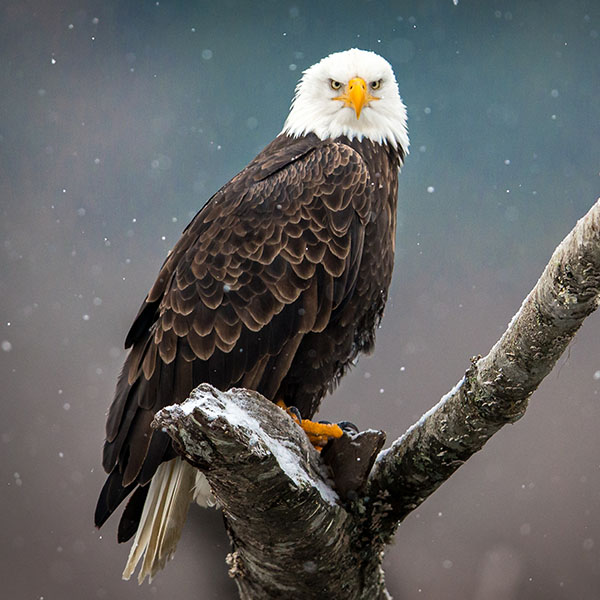Although they are the U.S.’s national bird, bald eagles were once threatened with extinction due to poaching, habitat loss, and exposure to pesticides such as DDT. Widely used as an agricultural insecticide, DDT began affecting eagles through a process called bioaccumulation; the chemical was consumed by insects, which were eaten by small birds and fish, which were in turn eaten by apex predators like eagles. In each stage of the food chain, the concentration of toxins increased. High concentrations caused eagles to lay eggs with thin, fragile shells that broke under the weight of their parents. Luckily, with federal protection, the creation of the EPA, and the banning of DDT in 1972, bald eagles have rebounded dramatically and are now a common sight along the Rogue River. They were fully removed from the Endangered Species list in 2007.
Their name comes from the old English word “balde,” meaning “white.” Immature bald eagles don’t acquire the iconic white head and tail until they’re around 3-5 years of age. Although they are powerful hunters, bald eagles are also notorious thieves and scavengers, often taking fish from other raptors such as Osprey. In regions like Alaska, where bald eagles are quite common, they also often scavenge for food in junk yards.

